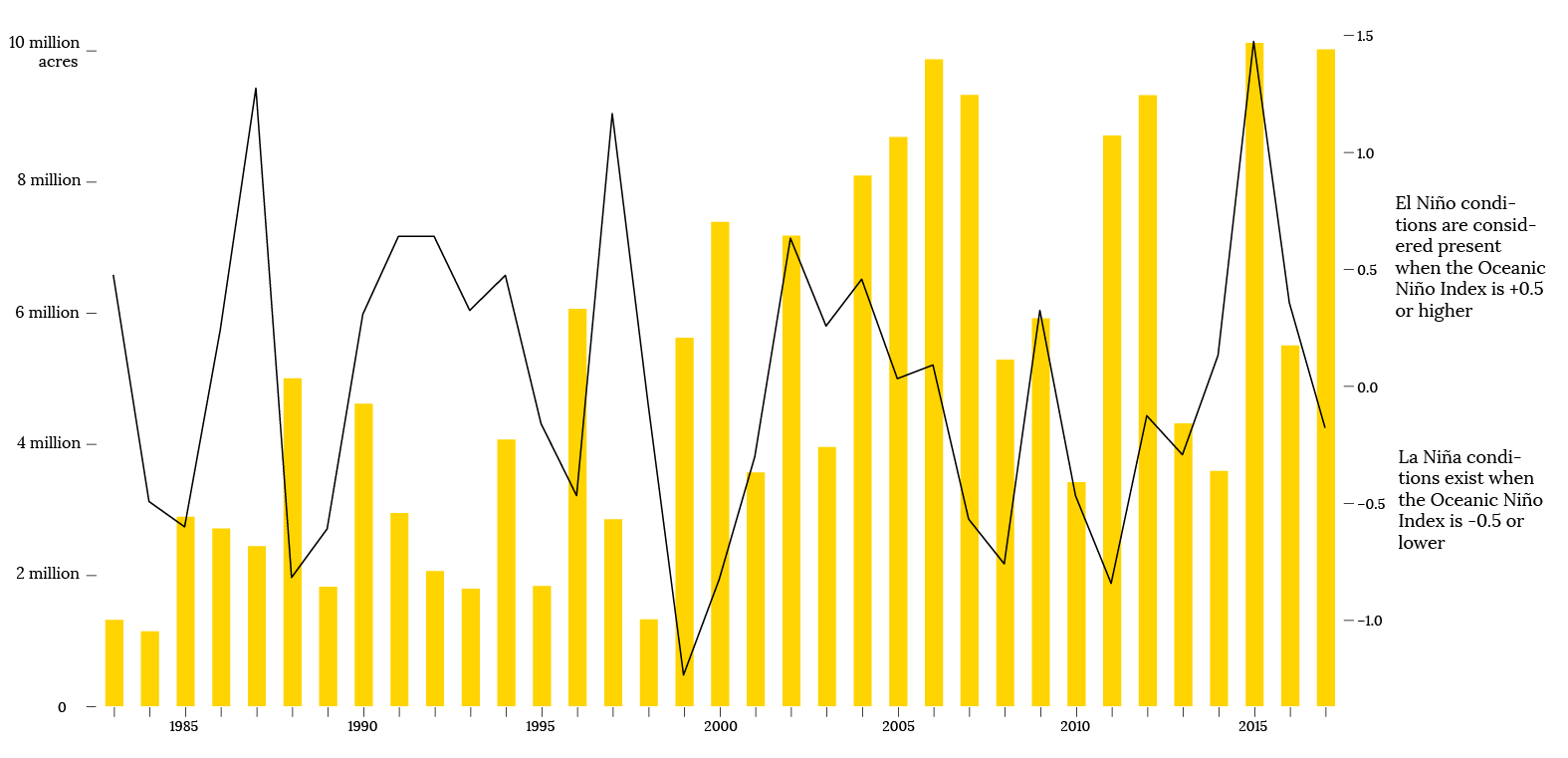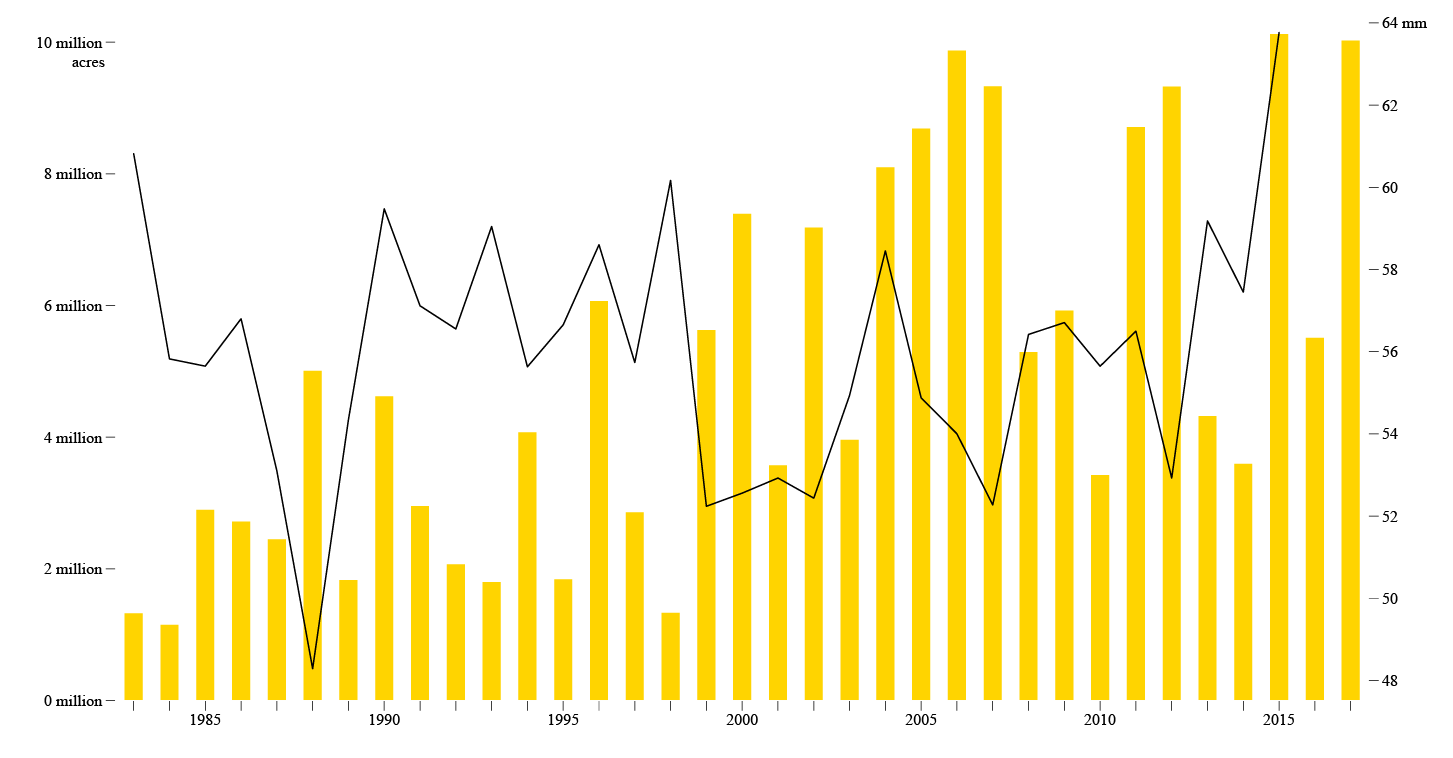Fire Department
10 Million Acres and More
BY Jessica McKenzie
Published July 30, 2018
While the annual number of wildland fires in the United States has been relatively constant since the mid-1980s, over the last two decades they have become more devastating. It is no longer unusual for wildland fires to consume close to 10 million acres of land annually, according to records maintained by the National Interagency Fire Center.
Climate scientists have observed that the increase in size and severity of wildfires correlates with rising average temperatures, but wildfires occur within a complex climate system. One study analyzed fire scars and tree rings dating back to 1550 and found that large fires in the southwestern United States are more common during La Niña events, which are associated with lower precipitation in that region. The pattern is reversed in the northwest, which have wetter than usual conditions during La Niña events.
The relationship between wildfires and the El Niño–Southern Oscillation climate pattern (ENSO), if it exists, is a complicated one. Simon Wang, a climate researcher at Utah State University, writes that “a wet year reduces fires while increasing vegetation growth, but then the increased vegetation dries out in subsequent dry years.” Fires that begin during dry years then have more fuel to consume.
“If the wet-dry cycle amplifies in the future, as Stevenson et al. (2012) suggest it might, more vegetation will grow in the wetter years and, subsequently, provide more fire fuel during the drought years,” Wang concludes. “The potential and extent of wildfire will continue to increase as a result.”
Annual wildland fires by acreage burned and the ENSO climate pattern (1983 - 2017)
Without more reliable and consistently gathered data on wildland fires, the complex relationship between ENSO and wildland fires is hard to see here.

SOURCES: National Interagency Fire Center; The National Weather Service

